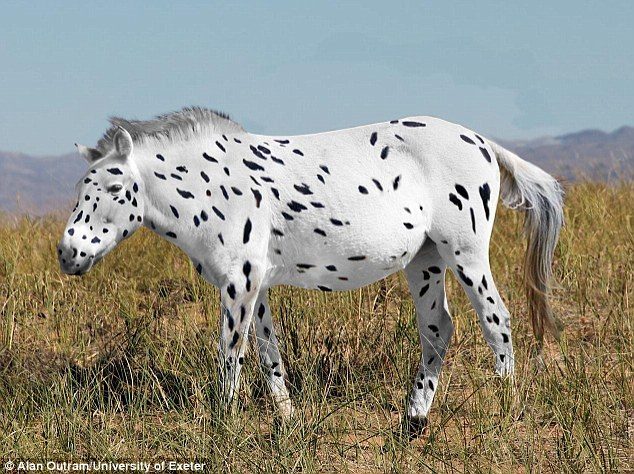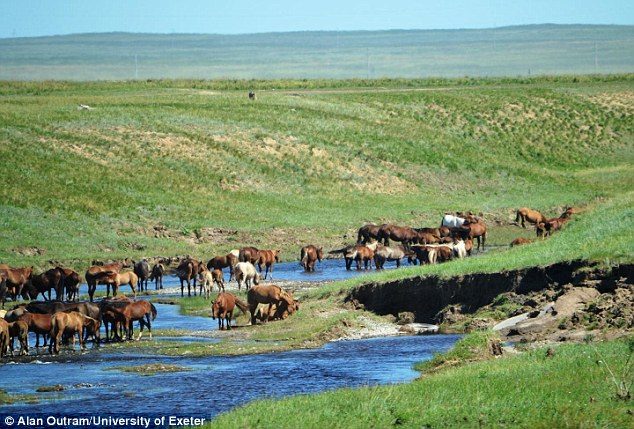
Przewalski's horses, a breed thought to be the last 'wild' species, are the descendants of escaped once-domesticated animals.
The research turns the mysterious origin of domesticated horses 'upside down', experts claim.
Przewalski's horses now number roughly 2,000 in Mongolia.
But researchers this week upended that theory on an examination of the genomes of dozens of ancient and modern horses.
'Our findings literally turn current population models of horse origins upside-down,' said Professor Ludovic Orlando, a molecular archaeologist at the French National Center for Scientific Research who led the study.
Their study claims that Przewalski's horse, saved from extinction in the 20th century, descended from horses domesticated in northern Kazakhstan some 5,500 years ago by people in what is called the Botai culture.
This suggests all wild horses are now extinct.
The research showed that the Botai culture offers the earliest-known evidence for horse domestication, but that their horses were not the ancestors of modern domesticated breeds.
'The world lost truly wild horses perhaps hundreds, if not thousands of years ago, but we are only just now learning this fact, with the results of this research,' said University of Kansas zooarchaeologist Sandra Olsen, one of the researchers.
The history of people and horses has been intertwined for millennia.
'Horse domestication was a critical innovation,' said archaeologist Alan Outram of the University of Exeter, who helped lead the study.
'Horse riding was the fastest form of transport for thousands of years, from the Copper Age over 5,000 years ago until the steam train.
'Even then it was really only the motor car that replaced it on a wide scale. Horses revolutionized human mobility, trade and modes of warfare,' Outram added.
Przewalski's horse, named for a Russian who described them in the 19th century, is relatively small and stocky.
Like horses depicted in prehistoric cave paintings, it is dun-colored with a dark erect mane.
The current population is descended from 15 individuals caught a century ago, with Przewalski's horse later reintroduced into the wild.

'This means that we must continue the search for the true ancestors of modern breeds by gathering samples from places like Ukraine, western Russia, Hungary, Poland and that region,' Olsen added.
The research was published in the journal Science.



Reader Comments
Does this count?
Or the people who insist that man evolved from apes, yet apes are around and about like nobody's business? Or even the fact that the discovery being made of the 18,000,000 year-old fossil of an Afruikan in Kenya, but no old fossil of an ape anywhere?
Shalom